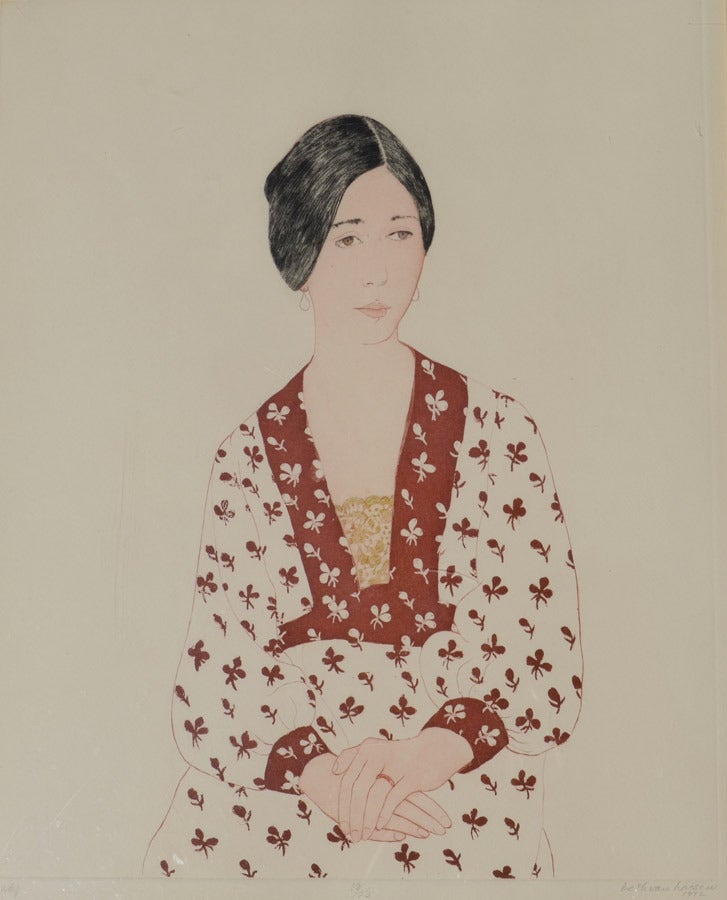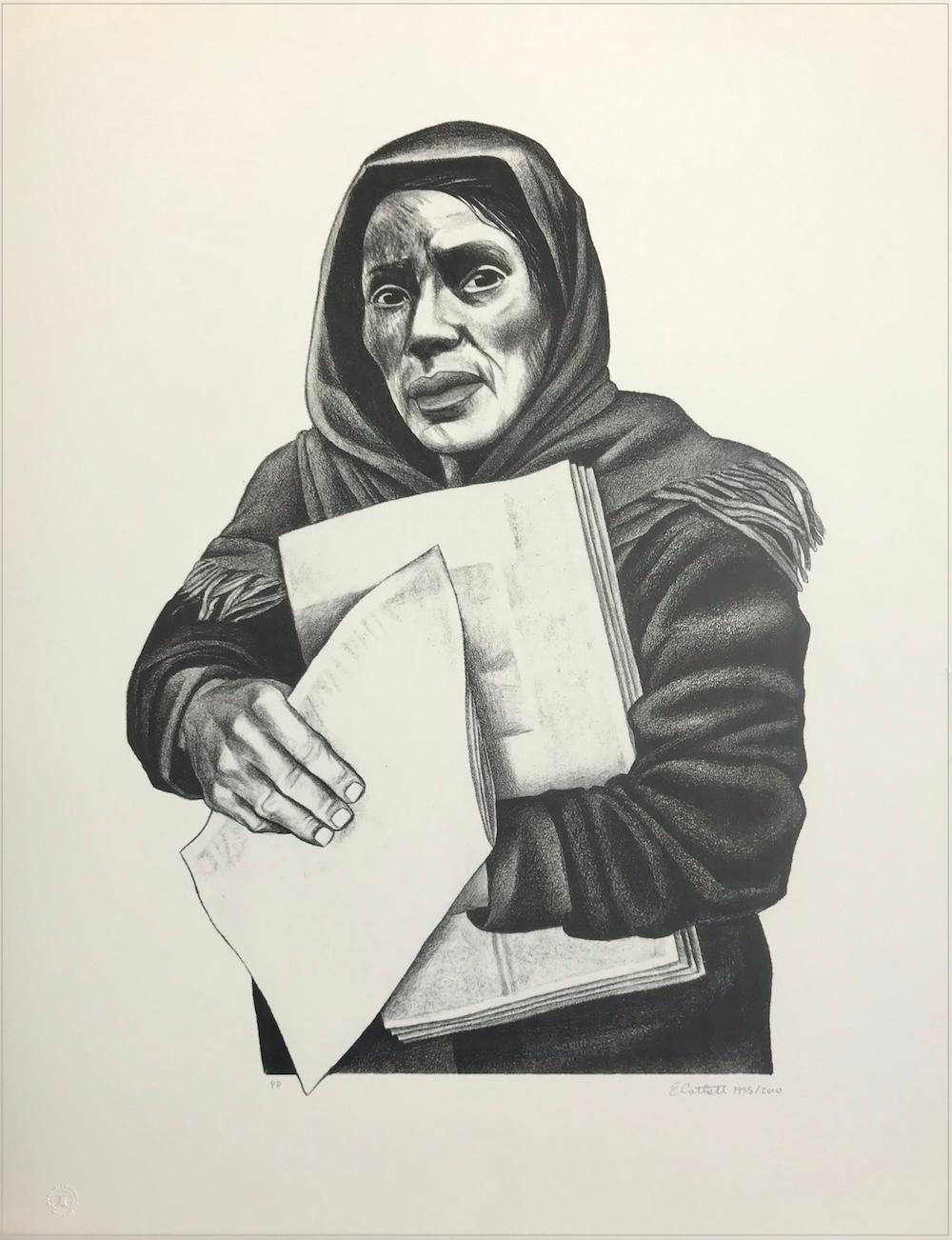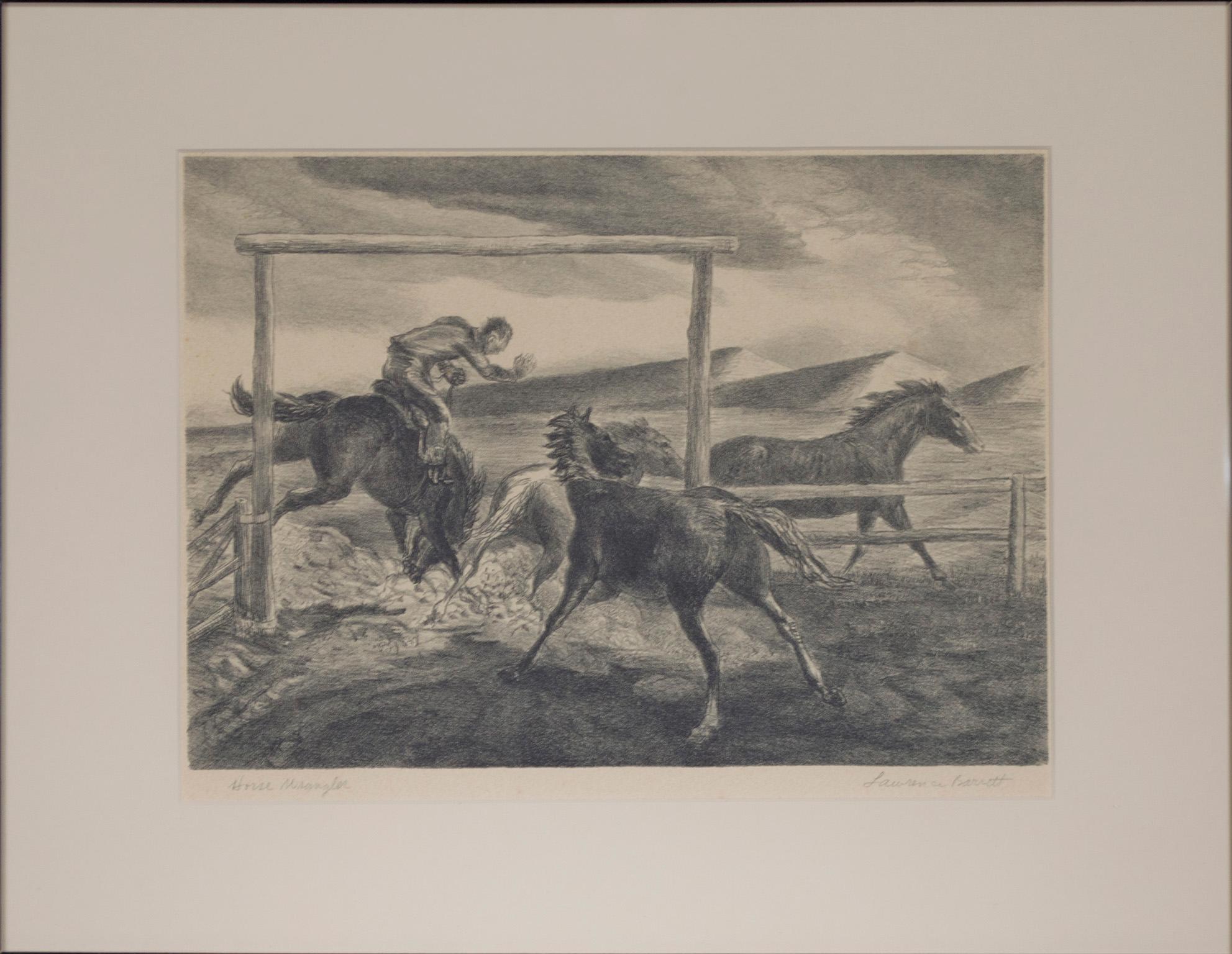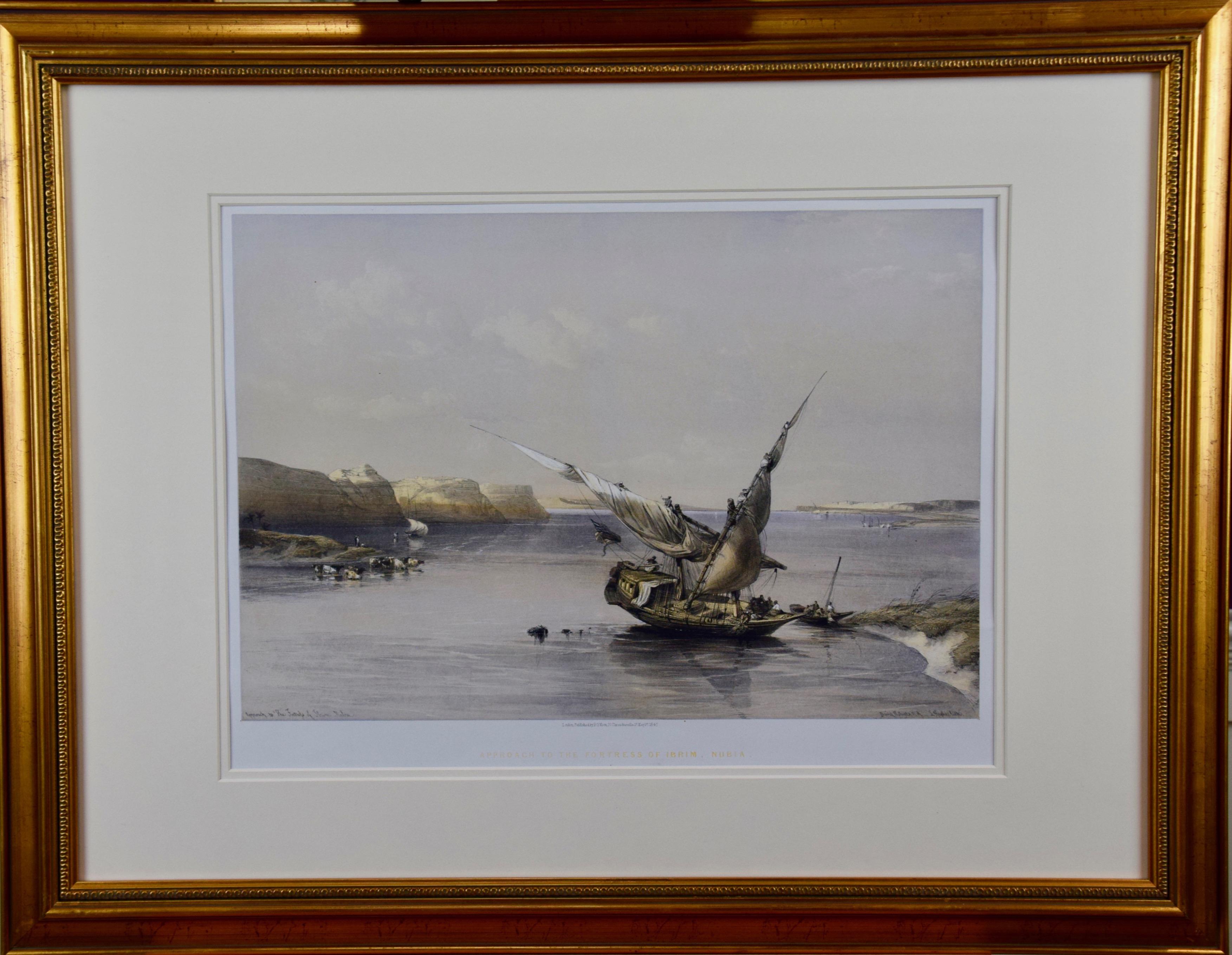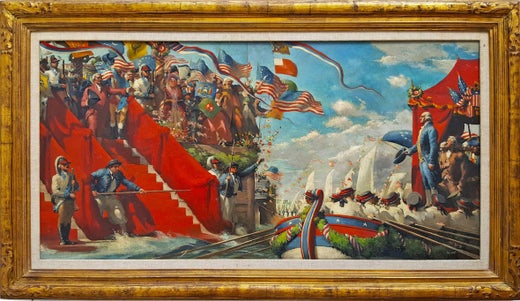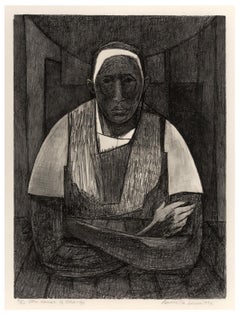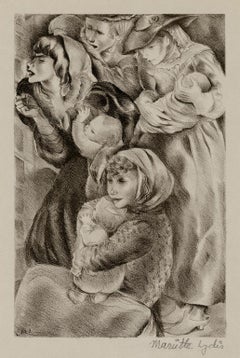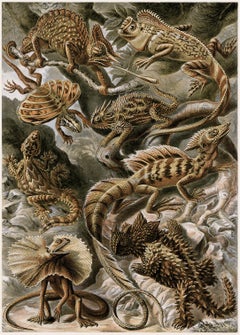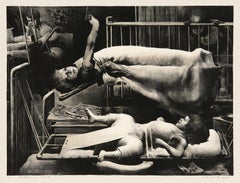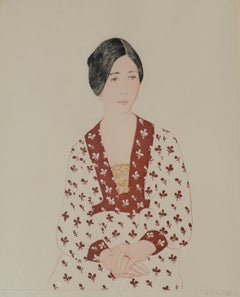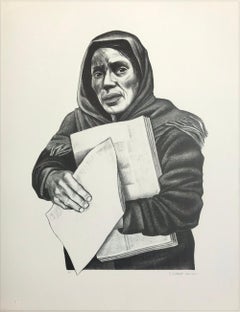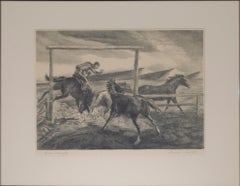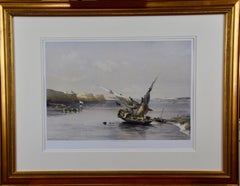Robert Riggs, 'Psychopathic Ward', 2-color lithograph, c. 1940, edition c. 50, Beall 60, Bassham 78. Signed, titled, and numbered '14' in pencil. Signed in the stone, lower right. A superb, atmospheric impression, in warm black ink printed over a pale yellow-gray background tint, on off-white wove paper; the full sheet with margins (1 1/8 to 2 1/2 inches), in excellent condition. Matted to museum standards, unframed.
Image size 14 1/4 x 18 7/8 inches; sheet size 17 1/4 x 23 3/4 inches.
In this meticulously produced work the use of 2 ink colors, warm gray and black, renders unusually deep blacks and enhances the wide, finely nuanced range of values.
Exhibited: 'The American Scene: Prints from Hopper to Pollock', Stephen Coppel, The British Museum, 2008. 'American Graphics 1860-1940', The Philadelphia Museum of Art, 1982. 'American Prints, 1913-1963', Royal Library Albert I, Brussels, Belgium, 1976. 'The Print Club', Philadelphia, November - December 1941.
Reproduced: 'American Lithographers 1900-1960: The Artists and Their Printers', Clinton Adams, The University of New Mexico Press, 1983. 'The American Scene: Prints from Hopper to Pollock', Stephen Coppel, The British Museum, 2008.
Impressions of this work are in the collections of the Blanton Museum of Art, British Museum (London), Cornell University, U. S. Library of Congress, Museum of Fine Arts Boston, Museum of Modern Art, National Gallery of Art, National Library of Medicine, New Britain Museum of American Art, Philadelphia Museum of Art, UC Santa Barbara, Washington State University, Woodmere Art Museum, and the Yale Medical Library.
ABOUT THE ARTIST
Painter, printmaker, and illustrator Robert Riggs (1896-1970) is best known for his compelling, realistic images of the circus, boxing matches, and hospital wards. Riggs was born in Decatur, Illinois, beginning his art studies at Millikin University. At age nineteen, he won a scholarship to the Art Students League inNew York City, and went on to work for the advertising firm A. W. Ayer & Company in Philadelphia. During World War I, Riggs served in France with a Red Cross hospital unit where he made numerous sketches of wounded soldiers—the suffering he witnessed informed his later social-conscious work in printmaking. While in France, Riggs studied at the Académie Julian, a private art academy favored by American expatriates.
Riggs returned to his pre-war job in Philadelphia and worked freelance in magazine illustration and advertising design. In 1924, he departed for international travel, making watercolor paintings of scenes in North Africa, China, Thailand, and the Caribbean islands. An exhibition of lithographs by George Bellows in 1931 inspired Riggs to make his prints of boxing subjects for which the older artist had gained renown. In 1933, Riggs' lithographs were presented in a solo show at the Frank Rehn Gallery, New York. Riggs subsequently turned to the circus subjects for which he gained further recognition, creating a series of fifteen prints. He later made four important lithographs on modern medical practices for pharmaceutical manufacturer Smith, Kline and French Corporation.
Of the eighty-four prints Riggs made over twenty years, most were produced between 1934 and 1936, when the challenging economic conditions of the Great Depression made prints particularly popular for their relatively low cost. Riggs gave up printmaking around 1950 but continued to produce black-and-white drawings commissioned for reproduction. Riggs was elected to associate membership in New York's venerable National Academy of Design in 1939, with full membership following in 1946, the year he was featured in a solo exhibition at the Pennsylvania Academy of the Fine Arts. Between 1961 and 1963, Riggs taught at the Philadelphia College of Art (now The University of the Arts). He spent his later years in New York City, where he continued to create until he died in 1970.
Riggs's work is represented in prestigious institutions, including the British Museum (London), Cornell University, Metropolitan Museum of Art, Museum of Fine Arts Boston, Museum of Modern Art, National Gallery of Art, National Library of Medicine, Philadelphia Museum of Art, Smithsonian American Art Museum, UC Santa Barbara, U.S. Library of Congress, Washington State University, Woodmere Art Museum, and Yale Medical Library.
